It is a well-known fact that when the city of Bengaluru aka Bangalore aka Bendhakaluru was formed, there were four towers or “Kempegowda gopuras” that were designated as the outer boundaries of the city. However, given the pace at which the city has grown since then, the significance of these four towers today, is more symbolic than anything else. But, did you know that these towers were built in the four corners with the Sri Dharmaraya swamy temple’s tower or ‘vimanagopura’ as the center point? Well, this is indeed a revelation and also a testimony to the fact that this legendary temple has been ‘central’ (both literally and figuratively) to the existence and development of Bangalore city.
 Exterior of the Dharmaraya Swamy Temple in Bangalore
Exterior of the Dharmaraya Swamy Temple in Bangalore
One of the earliest landmarks of Silicon city
Tucked away in the midst of Bangalore’s bustling city market, this historical temple is unique, in that, it is dedicated to the Pandavas and Draupadi even though it is named after the eldest Pandava, Yudhishtira. In fact, it is said to be the only temple in the country built in honor of the Pandavas. It is commonly believed that the temple was well established even before the formation of Bangalore in 1530 AD with its founder Kempegowda being one of its main devotees. Nevertheless, the department of archeology has certified that this temple is over 800 years old. This is based on their study of the temple stone and construction techniques used during that time.
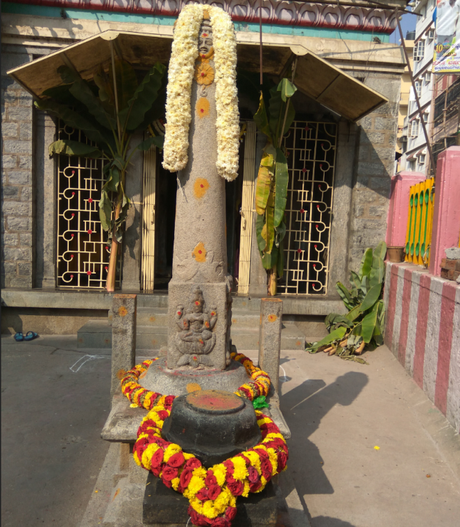
Multiple architectural styles
The temple is believed to have been built by the Ganga Arasaru dynasty who belonged to the Vanhi Kula Kshatriyas clan or the “Thigalas” community. The temple has influences of the Ganga, the Pallava and the Vijayanagara schools of architecture. The present ‘Rajgopura’ or tower of the temple has a distinct Vijayanagara style with a central panel depicting the durbar scene with Lord Krishna, Yudhishtira, Draupadi, Arjuna, Bheema, Nakula and Sahadeva. The ‘Vimanagopura’ is said to be constructed in the Pallava style of architecture.
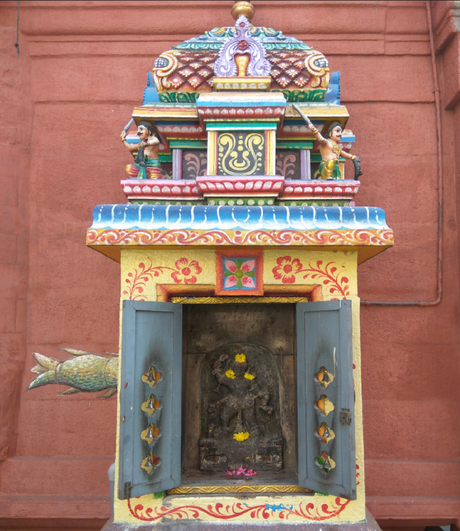
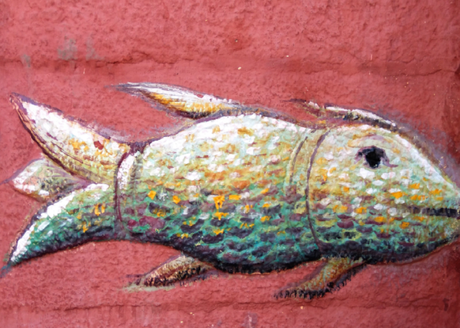
The ‘garbhagriha’ or sanctum that bears a distinctive Ganga style of construction has deities dedicated to all the five Pandavas as well as Draupadi apart from Lord Krishna and Goddess Adi Shakti. The main pillars of the temple , the primitive style of the “Garuda Kamba” and intricate carvings in the interiors are testimony to the fact that the temple is one of the most ancient in the city. The sculptures on the pillars include that of the holy bull, fish, ‘apsaras’ and several other mythical figures.

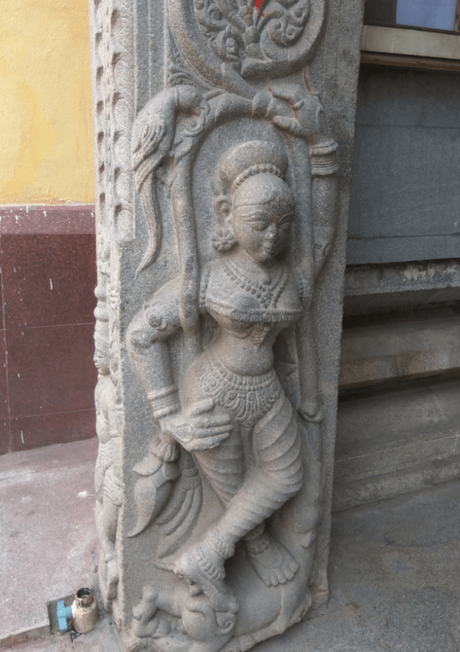
In addition to the main temple, there are temples dedicated to Lord Ganesha and Goddess Muthyalamma on either side of the main structure.

Karaga Shaktyotsava
Apart from being a temple of historical importance, the Dharmaraya swamy temple is also highly significant from a religious stand point as it serves as the starting point for the famous Karaga festival. One of the oldest and most famous festivals of Bangalore, Karaga is a celebration by the people of the “Thigalas” community and literally means bearing the deity on the head without touching by hand or moving around. It is believed to be the home coming of Draupadi and is celebrated on the day of “Chaithra Poornima” each year. The festival is marked by a 11-day long period of “vratha” or detailed rituals. An ode to Draupadi, whom the Thigalas worship as the ideal woman, the festival is a celebration of women power. It is believed that during this time, Draupadi descends from heaven and stays for 3 days with the community. The men of the community are considered to be warriors or ‘veerakumaras’ of Draupadi’s army and one of them is selected to be the carrier of the Karaga.
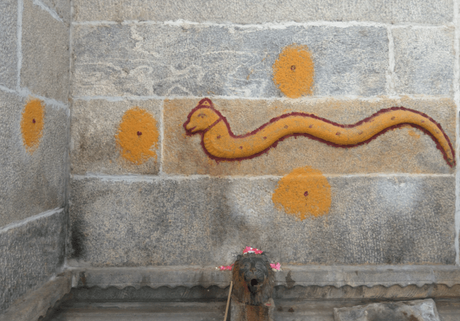
The Karaga itself is a tall floral pyramid which is a marvellous, colourful spectacle. The carrier dresses up in feminine clothing wearing the traditional ‘mangalasutra’, plenty of bangles and Kumkum and balances the karaga precariously on his head. The contents of the pot that is carried on the head is a fiercely guarded secret and has been persevered thus for generations. On the actual day of the festival, the procession starts at midnight from the temple and moves through the streets surrounded by the Veerakumaras who are bare chested, sword bearing men protecting the karaga. The carrier goes to the houses of the Veerakumaras where the deity is worshipped before returning to the temple at dawn. A festival that is celebrated with pomp and glory, it is also known for its secular nature with the procession stopping at the Dargah-e-Sharif of Hazrat Tawkal Mastan before returning to the temple.
This article was originally published in Deccan Herald here.
